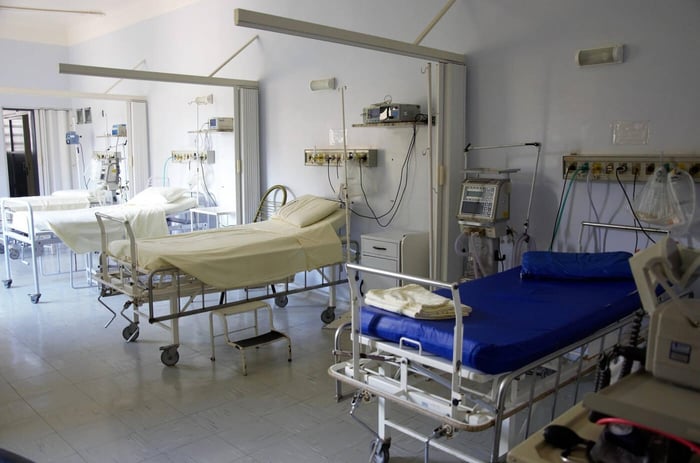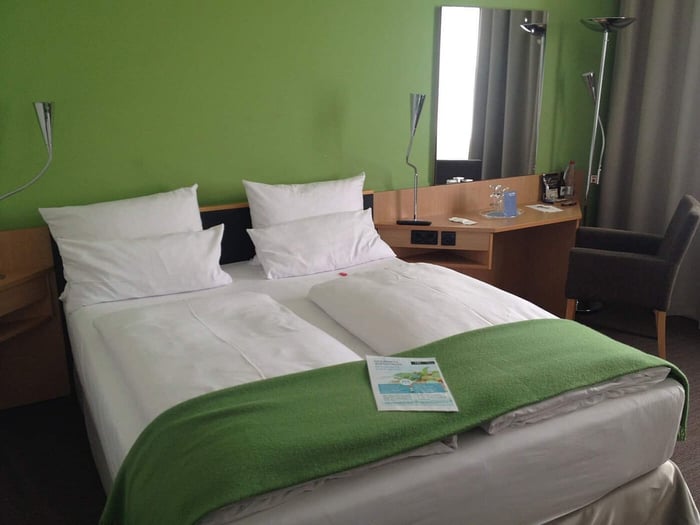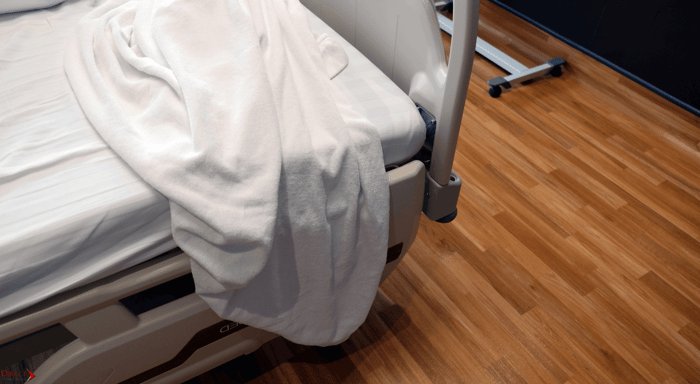Finding the right hospital blanket can be a daunting task. To make the best decision, it's important to understand the various types of blankets available and what factors should be considered when making your selection. That's why we've developed this hospital blanket buying guide for healthcare professionals and patients alike – providing essential information about materials, sizes, features as well as other critical criteria that factor into purchasing a hospital blanket. From offering warmth and comfort to helping ensure proper infection control protocols are observed in high-risk settings; this complete guide will help buyers locate just the right product!
KEY TAKEWAYS
There are a variety of different types each designed for a specific purpose. The most common type of hospital blanket is the standard fleece blanket.
They come in a variety of different sizes. The most common size is the twin size, which is typically 60 inches by 90 inches.
They are also available in a variety of different weights. The most common weight is the standard weight, which is typically between two and four pounds.
What Are Hospital Blankets?
Hospital blankets are specially designed blankets used in medical settings such as hospitals, clinics, and long-term care facilities. They are made to be durable, easy to clean, and provide comfort and warmth to patients during their stay. Hospital blankets can come in various sizes and materials, including cotton, polyester, wool, or blends. They may also have specific features such as flame retardancy, fluid-resistance, and hypoallergenic properties.
Uses of Hospital Blankets
Hospital blankets serve many purposes beyond providing warmth and comfort to patients. They also play a vital role in infection control by minimizing the spread of bacteria and viruses. Hospitals typically follow strict protocols for laundering and handling hospital blankets to ensure that they are free from pathogens.
In addition to patient use, hospital blankets are also used in medical procedures such as surgeries, where they are draped over the patient to maintain body temperature and prevent hypothermia. Hospital blankets are also used in emergency situations, such as natural disasters, to provide temporary shelter and warmth to displaced individuals.
What Are the Benefits Of Hospital Blankets?
There are numerous benefits of hospital blankets. They provide patients with a sense of comfort and security during a vulnerable time, which can contribute to a more positive hospital experience. Hospital blankets can also help regulate body temperature, which is especially crucial for patients with certain medical conditions. Additionally, hospital blankets can reduce the spread of infection and promote hygiene in medical settings.
The Importance of Hospital Blankets: Comfort, Care, and Infection Control
When it comes to healthcare, hospital blankets may not be the first thing that comes to mind. However, they play an essential role in patient care, providing warmth, comfort, and infection control benefits.
Hospital blankets are designed to provide comfort and care to patients during their hospital stay. Being in a hospital can be stressful and unsettling, however a warm and cozy blanket can help alleviate some of that stress. Hospital blankets are typically made from soft, comfortable materials that can provide a sense of warmth, security and familiarity to patients.
In addition to providing comfort, hospital blankets also play a crucial role in patient care. They help regulate body temperature, which is especially important for patients with certain medical conditions. They also protect patients' privacy by providing coverage during medical procedures and examinations.
Hospital-acquired infections (HAIs) are a significant concern for healthcare professionals and patients alike. These infections can be life-threatening and difficult to treat. Hospital blankets can play a critical role in infection control by reducing the spread of bacteria and viruses.
Hospitals have strict protocols for handling and laundering hospital blankets to ensure that they are free from pathogens. Many hospital blankets are also designed to be fluid-resistant, which can help prevent the spread of infectious materials.
The Types of Hospital Blankets
The healthcare industry relies upon a variety of hospital blankets to provide warmth and comfort, protect from infection and cross-contamination. But with so many different types available, it can be difficult for medical professionals to determine the ideal blanket selection for their facility.
Thermal Blankets
Thermal blankets are made of a lightweight, synthetic material that traps body heat to keep patients warm. They are perfect for use in cooler environments or for patients who are undergoing surgery or procedures that require anesthesia. Thermal blankets are easy to launder and can be used repeatedly.
Wool Blankets
Wool blankets are constructed of natural fibers that provide warmth and comfort to patients. They are durable and can withstand frequent washing and use. Wool blankets are also hypoallergenic and resistant to mold and mildew. They are ideal for use in colder environments.
Cotton Blankets
Made of natural fibers that are soft and gentle on the skin, cotton blankets are breathable and provide excellent insulation without causing patients to overheat. Cotton blankets are also easy to launder and maintain, making them a popular choice in healthcare facilities.
Quilted Blankets
Quilted blankets are the ideal winter companion, providing both warmth and comfort with their multiple layers of stitched fabric. The perfect insulation for colder climates, these durable wonders also withstand frequent washing without any issue - letting you snuggle up in complete security all season long.
Disposable Blankets
Disposable blankets are perfect for use in emergency situations or for patients who are at risk of infection. They are made of lightweight, synthetic materials that are designed for single-use and can be used to reduce the risk of cross-contamination.
What sizes do hospital blankets usually come in?
When selecting hospital blankets, it is important to consider their size to ensure that they are appropriate for the patient's needs.
Receiving Blankets
 Receiving blankets are the smallest type of hospital blanket, typically measuring around 30 inches by 30 inches. They are used for newborn babies and premature infants and provide warmth and comfort during their stay in the hospital.
Receiving blankets are the smallest type of hospital blanket, typically measuring around 30 inches by 30 inches. They are used for newborn babies and premature infants and provide warmth and comfort during their stay in the hospital.
Pediatric Blankets
Slightly larger than receiving blankets, pediatric blankets are designed for use with children. They typically measure around 40 inches by 60 inches and provide warmth and comfort to young patients.
Lap Blankets
Just as they sound, lap blankets are used to cover patients' laps during procedures or while they are seated in a wheelchair. They are generally around 50 inches by 60 inches in size and are designed to provide warmth and comfort while allowing freedom of movement.
Twin Size Blankets
Twin size blankets are larger than lap blankets and are designed to fit a twin size bed. They typically measure around 66 inches by 90 inches and provide warmth and comfort to patients who are confined to bed.
Full Size Blankets
Slightly larger than twin size blankets, full size are designed to fit, you guessed it, a full size bed. They typically measure around 80 inches by 90 inches and provide warmth and comfort to patients who require a larger blanket.
Queen/King Size Blankets
Although not overly common, queen and king size blankets are the largest type of hospital blanket. A queen size is typically 90" x 100" and will fit a 60" x 80" queen mattress, while a king usually measures 108" x 92". It is always a good idea to measure the mattress.
Accurately measuring a hospital mattress requires much more than just numbers - it involves understanding the patient’s BMI and their overall condition. (1) A typical bed is 80 inches in length, equating to 6 feet 8 inches from inside the edges of headboard and footboard with the average width being 36 inches.(2); yet wider beds are available for larger frames reaching up to 94" long by 54" wide.

In addition to the the sizes, the weight of a hospital blanket can also vary, from light to heavy. Lightweight blankets are typically made from thinner materials, such as cotton or linen. These types of blankets are often used in warmer climates or during the summer months. Heavier blankets, on the other hand, are usually made from thicker materials, such as wool or down. These types of blankets are ideal for patients who are cold or have a low body temperature.
Where to buy hospital blankets
When considering where to buy hospital blankets, it is important to consider several factors including the quality of the blankets, the selection available, and the price. Online wholesale retailers, such as Direct Textile Store, are an excellent option for purchasing hospital blankets. Direct Textile Store offers bulk quantity discounts without having to pay to become a member, making it possible to purchase a large quantity at a reduced price.
With this complete hospital blanket buying guide as your guidepost, we hope you'll be able to find just the perfect product that provides a loving touch to your patients' needs.
Direct Textile Store ships to all US states, including Alaska and Hawaii, US Territories, Canada, Puerto Rico, St. Thomas, and St. Croix.
Source
1. Hospital Bed Mattress Sizes & Dimensions | Medtrica.
2. What Size Hospital Bed Do I Need? | Transfer Master
About the Author
Haley Bridges, Marketing Assistant at Direct Textile Store
Haley Bridges has served as Marketing Assistant at Direct Textile Store, where she specializes in hospitality linens, uniforms, and bulk textile solutions. She works closely with hotels, restaurants, and healthcare facilities to match them with durable, high-quality products that balance both performance and value. Haley's expertise in textile sourcing and merchandising strategy helps businesses make confident purchasing decisions while staying ahead of industry trends.






